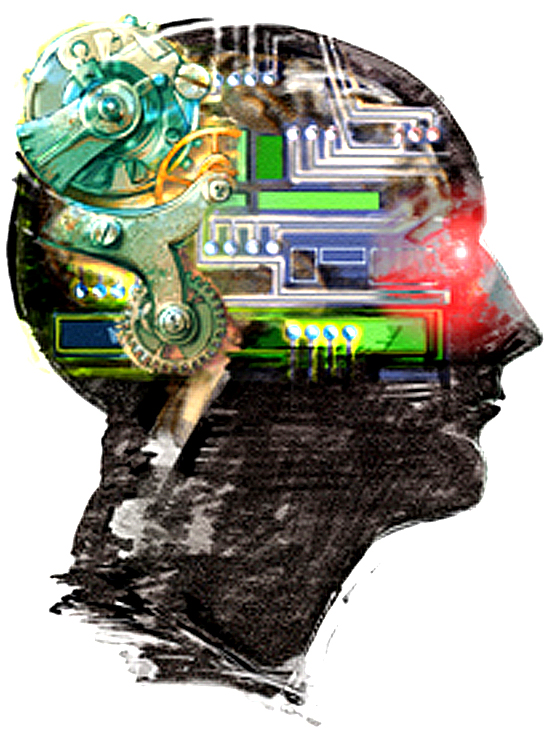AI has, and will continue to disrupt many traditional careers. According to a report by the global consultancy firm McKinsey & Company, by the year 2030 automation and AI could force around 33 percent of the US’s projected 166 million workforce to change jobs. How will this future impact the museum sector? This report investigates the pathways for AI in the workforce and where we might begin seeing it emerging in the museum sector.
Case Study II: Digital Engagement and Experience Design
As museums seek to increase engagement in both the physical museum space and across digital platforms, many are striving to create more personalized experiences that differentiate the museum visit and increase engagement with the institution and its collection. These two case studies—the Museum of Old and New Art in Tasmania, Australia, and the Cooper Hewitt Smithsonian Design Museum in New York—are examples of hybrid museums that successfully demonstrate how bridging the physical and virtual in the museum visitor experience can increase the length, breadth and depth of engagement with the institution and its collection.
The Hybrid Museum Experience: Case Studies in Digital Engagement and Experience Design
This is part 1 in a two-part series examining hybrid museums that successfully demonstrate how bridging the physical and virtual in the museum visitor experience can increase the length, breadth and depth of engagement with the institution and its collection. Part 1 explores the Museum of Old and New Art in Tasmania.
Digital Engagement Strategies for the 21st Century Museum
Shifting audience interests towards interactive and shareable experiences has led many museums to explore the potential of digital engagement tools. Given the costs and changes typically required for successful digital integration, museum staff must first ask themselves why their institution should consider investing in emerging technologies and what they hope to achieve from such an investment.
Immersion, is it AR/VR or Just R?
Learning Disabilities: What Arts Managers Need to Know
Rome Wasn't Built in a Day (Because They Didn't Have 3D Printers)
How Museums Can Leverage Live Streaming Technology
Artificial Intelligence and The Museum Space
White Paper Wednesday: Online Exhibitions
Organizational Implications of E-Commerce
As the market needs for convenience grow stronger, E-Commerce seems like a sound organizational investment for non-profits, especially for arts organizations that have the ability to develop branded and unique products. However, E-Commerce effects more than staffing and resources in a non-profit organization.
4 Ways to Enhance the Museum Experience with Artificial Intelligence
Accessibility Rebooted: Technological Advancements to Improve Accessibility in Museums
With the growing emphasis on providing learning experiences that occur outside the classroom, accessibility and inclusivity is of paramount importance to museums transitioning into the 21st century. As museums become more inclusive, their methods of communication must be equally as effective between people with disabilities and those without.
Artificial Intelligence And the Museum: An Introduction
Virtual Reality and Audience Engagement in Museums
Increasing Accessibility Through Virtual Reality: A Look at VR’s Therapeutic Potential
Virtual Reality has helped researchers make significant advancements in treating burn patients, phobias, PTSD, and learning disabilities. As the technology moves into museums, it presents an exciting opportunity for improved accessibility initiatives, potentially allowing visitors with autism and sensory-learning disabilities to enjoy a customizable museum experience in a safe, controlled environment.
Supporting Multi-Touch Functions
Multi-touch technology may be easy to use, but how it works is far more complex. While several technologies support multi-touch functions, museums may find that certain ones suit an exhibition’s needs better than others. Choosing the right multi-touch platform is the first step in creating an interactive and personal experience for visitors.
News Roundup: How Digital Distribution is Changing Forms
Every week, AMT-Lab contributors share articles on interesting news at the intersection of technology and arts management. Recently, this practice has generated lots of articles dealing with the distribution of art online. Using the Internet as the platform, museums and artists are spreading their work worldwide.
Multi-Touch Technology and the Museum: An Introduction
Touchscreens have altered the way we interact with our world. From scrolling through our Facebook newsfeed, to picking up tickets at the airport kiosk, we use this technology on a daily basis. Today museums around the world are embracing this tool as a way to promote interactive learning. Multi-touch technology, in particular, can create an interactive and collaborative learning environment. But what exactly is multi-touch technology?
#TBT: The Web-Based Arts Experience
When discussing the future of the arts, many professionals and studies have stated that the manner in which audiences consume arts and culture is rapidly changing--and has already changed. The Internet has been the most notable new space for consuming culture, providing both opportunities and challenges through widespread and instant information sharing. Over the past several years, AMT Lab has documented the various web-based arts experiences that are becoming readily available--usually including lessons and best practices that managers can take away for their own practice. This week’s TBT rounds them up into a user-friendly toolbox of online arts experiences of various artistic mediums.





















